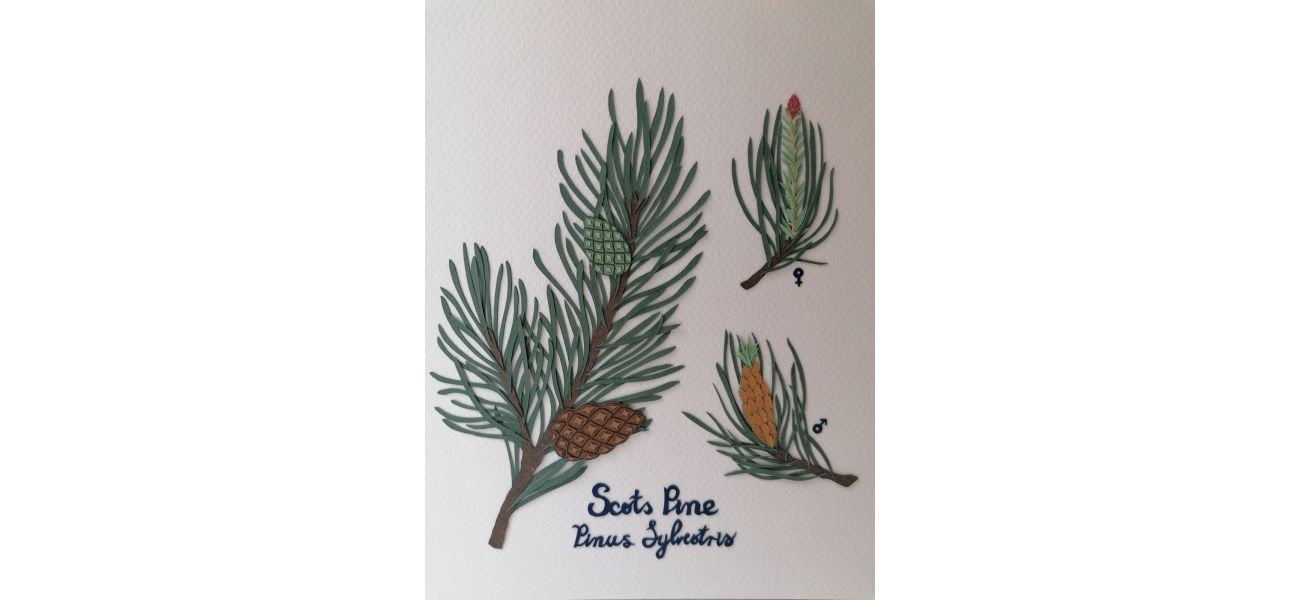In December, nothing is more spiritually uplifting than strolling through a Scots Pine forest according to Hamish Martin.
Meet Scottish Field's new columnist, Hamish Martin, who will be sharing his expertise and passion for plants in a monthly column, starting with the Scots Pine.
November 8th 2024.

We are thrilled to introduce our newest columnist, Hamish Martin, who is a herbologist based in Perthshire and a lecturer at the Royal Botanic Garden in Edinburgh. With his love for nature and foraging, Hamish will be sharing his extensive knowledge about plants in his monthly column for Scottish Field. For his first column, Hamish has chosen to shine a light on the majestic Scots Pine.
There is something truly enchanting about walking through an ancient Caledonian forest or a Scots Pine wood, especially during the month of December. The wind whispers secrets through the needles of the towering pine trees, and the sweet fragrance of the forest transports you to a dreamlike state and a time long gone. There is a remarkable energy that flows through these woods, where juniper, blaeberries, moss, lichen, and the pine trees coexist harmoniously. Take a moment to sit and connect with this energy, which is deeply intertwined with our very DNA. Just like the pine martens, red squirrels, eagles, Scottish crossbills, and wildcats, you too will feel at home in this magical woodland.
Although the Scots Pine is often thought of as the first tree to colonize the land after the retreat of the ice age, it was actually the silver birch and ancient hazel that paved the way about 11,700 years ago. The Scots Pine made its grand entrance about 10,500 years ago. It's no wonder that this tree has a rich history intertwined with the land and the creatures that call it home.
Early settlers used the resin-rich wood of the Scots Pine to make shelter, fires, and light. The resin also had antiseptic and antibacterial properties, making it a useful tool for sealing wounds. The needles are high in vitamin C, making them a valuable source of nutrition during the winter months. In the Highlands, the Scots Pine was used as a marker for the burial sites of warriors, heroes, and chieftains.
Over time, the resin was also used to make turpentine and glue, and the inner bark was used for rope. However, as shipbuilding and charcoal burning became more prevalent in the seventeenth century, the Scots Pine forests began to decline. This, coupled with an increase in deer numbers for hunting, caused a rapid decrease in these precious habitats.
It's no surprise that these Caledonian forests have been deemed a priority habitat under the UK Biodiversity Action Plan. It is our duty to preserve and protect them. The primary focus is on encouraging natural regeneration, followed by planning the growth of new pine woods in suitable locations. This should not be done out of nostalgia or myth, but out of our love for Scotland and our national tree, the Scots Pine. We must cherish and treasure our pine wood ecosystems.
As we approach the end of the year, let's take a moment to reflect on the significance of the evergreen Scots Pine. It was considered sacred by the Druids, who used to light huge bonfires of pine during the winter solstice to celebrate the passing of the seasons and to welcome back the sun. Glades of Scots Pines were also adorned with lights and shiny objects, symbolizing the Divine Light. These ancient rituals have influenced the modern-day customs of the Yule log and Christmas tree. So this Christmas, let's pay tribute to this magnificent tree and all that it represents.
If you want to read more stories about gardens, be sure to check out our other articles. And don't forget to subscribe to Scottish Field to read the latest issue. Happy Holidays!
There is something truly enchanting about walking through an ancient Caledonian forest or a Scots Pine wood, especially during the month of December. The wind whispers secrets through the needles of the towering pine trees, and the sweet fragrance of the forest transports you to a dreamlike state and a time long gone. There is a remarkable energy that flows through these woods, where juniper, blaeberries, moss, lichen, and the pine trees coexist harmoniously. Take a moment to sit and connect with this energy, which is deeply intertwined with our very DNA. Just like the pine martens, red squirrels, eagles, Scottish crossbills, and wildcats, you too will feel at home in this magical woodland.
Although the Scots Pine is often thought of as the first tree to colonize the land after the retreat of the ice age, it was actually the silver birch and ancient hazel that paved the way about 11,700 years ago. The Scots Pine made its grand entrance about 10,500 years ago. It's no wonder that this tree has a rich history intertwined with the land and the creatures that call it home.
Early settlers used the resin-rich wood of the Scots Pine to make shelter, fires, and light. The resin also had antiseptic and antibacterial properties, making it a useful tool for sealing wounds. The needles are high in vitamin C, making them a valuable source of nutrition during the winter months. In the Highlands, the Scots Pine was used as a marker for the burial sites of warriors, heroes, and chieftains.
Over time, the resin was also used to make turpentine and glue, and the inner bark was used for rope. However, as shipbuilding and charcoal burning became more prevalent in the seventeenth century, the Scots Pine forests began to decline. This, coupled with an increase in deer numbers for hunting, caused a rapid decrease in these precious habitats.
It's no surprise that these Caledonian forests have been deemed a priority habitat under the UK Biodiversity Action Plan. It is our duty to preserve and protect them. The primary focus is on encouraging natural regeneration, followed by planning the growth of new pine woods in suitable locations. This should not be done out of nostalgia or myth, but out of our love for Scotland and our national tree, the Scots Pine. We must cherish and treasure our pine wood ecosystems.
As we approach the end of the year, let's take a moment to reflect on the significance of the evergreen Scots Pine. It was considered sacred by the Druids, who used to light huge bonfires of pine during the winter solstice to celebrate the passing of the seasons and to welcome back the sun. Glades of Scots Pines were also adorned with lights and shiny objects, symbolizing the Divine Light. These ancient rituals have influenced the modern-day customs of the Yule log and Christmas tree. So this Christmas, let's pay tribute to this magnificent tree and all that it represents.
If you want to read more stories about gardens, be sure to check out our other articles. And don't forget to subscribe to Scottish Field to read the latest issue. Happy Holidays!
[This article has been trending online recently and has been generated with AI. Your feed is customized.]
[Generative AI is experimental.]
0
0
Submit Comment





